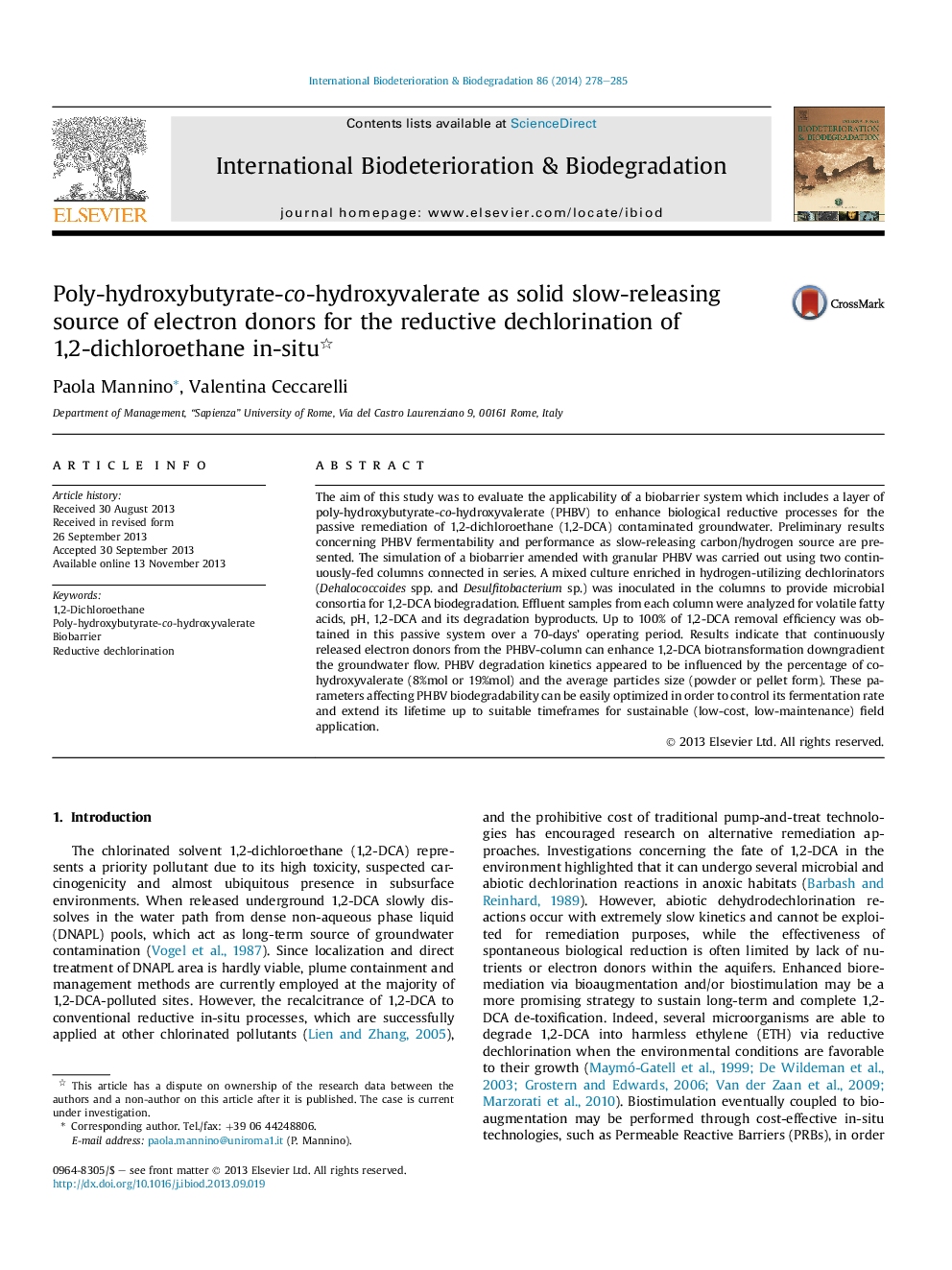| کد مقاله | کد نشریه | سال انتشار | مقاله انگلیسی | نسخه تمام متن |
|---|---|---|---|---|
| 4364813 | 1301725 | 2014 | 8 صفحه PDF | دانلود رایگان |

• Applicability of PHBV as slow-releasing substrate for biobarrier technologies.
• Study of PHBV degradation kinetics into volatile fatty acids and related effect on pH.
• Optimization of some parameters influencing the biodegradability of PHBV co-polymers.
• Enrichment of a mixed culture able to degrade 1,2-DCA via reductive dechlorination.
• PHBV degradation products enhance de-toxification of 1,2-DCA-polluted groundwater.
The aim of this study was to evaluate the applicability of a biobarrier system which includes a layer of poly-hydroxybutyrate-co-hydroxyvalerate (PHBV) to enhance biological reductive processes for the passive remediation of 1,2-dichloroethane (1,2-DCA) contaminated groundwater. Preliminary results concerning PHBV fermentability and performance as slow-releasing carbon/hydrogen source are presented. The simulation of a biobarrier amended with granular PHBV was carried out using two continuously-fed columns connected in series. A mixed culture enriched in hydrogen-utilizing dechlorinators (Dehalococcoides spp. and Desulfitobacterium sp.) was inoculated in the columns to provide microbial consortia for 1,2-DCA biodegradation. Effluent samples from each column were analyzed for volatile fatty acids, pH, 1,2-DCA and its degradation byproducts. Up to 100% of 1,2-DCA removal efficiency was obtained in this passive system over a 70-days' operating period. Results indicate that continuously released electron donors from the PHBV-column can enhance 1,2-DCA biotransformation downgradient the groundwater flow. PHBV degradation kinetics appeared to be influenced by the percentage of co-hydroxyvalerate (8%mol or 19%mol) and the average particles size (powder or pellet form). These parameters affecting PHBV biodegradability can be easily optimized in order to control its fermentation rate and extend its lifetime up to suitable timeframes for sustainable (low-cost, low-maintenance) field application.
Journal: International Biodeterioration & Biodegradation - Volume 86, Part C, January 2014, Pages 278–285